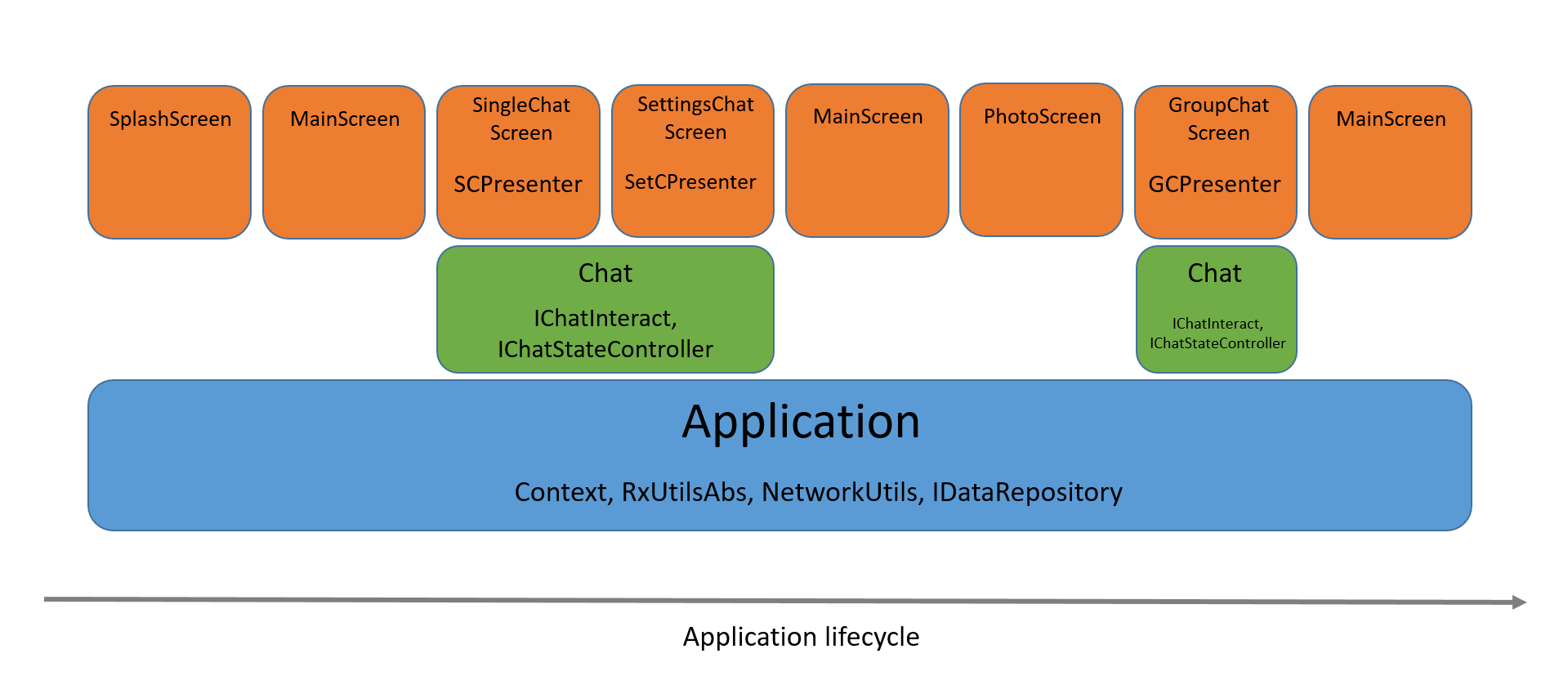My idea about this issue is to create a new kind of widget:
A mixture between an InheritedWidget and a StatefulWidget It's an InheritedWidget with a state (but no build method).
The principle is that the state of our new widget is created only when there's at least one listener.
This means a few things:
- Wrapping the whole app inside such widget is a no-op if no widget listen to its state
- Always listening to the state is equivalent to the usual StatefulWidget + InheritedWidget combo
- Listening to the state for some time, and then unmounting all widgets that listen to that state disposes of the state.
Such widget would allow us to have the following architecture:
class _Foo extends InheritedStatefulWidget {
_Foo({Widget child}): super(child: child);
_FooState createState() => _FooState();
}
class _FooState extends InheritedState<_Foo> {
Foo foo;
initState() {
foo = Foo();
}
}
// ...
_Foo(
child: MaterialApp(
routes: {
'/': (context) {
final fooState = context.inheritFromStateOfExactType(_FooState) as _FooState;
return Provider.value(value: fooState.foo, child: Home());
},
'/settings': (context) => Settings(),
},
),
)In such configuration, only the route / can read the current state through Provider<Foo>.of(context).
And if we go to /settings with a pushReplacement or by disabling maintainState on Route, then this would dispose _FooState
Note that I used a new method on BuildContext. It is not the same as for using InheritedWidgets.



Having a way to manage scopes in Flutter. (From https://proandroiddev.com/dagger-2-part-ii-custom-scopes-component-dependencies-subcomponents-697c1fa1cfc)
(From https://proandroiddev.com/dagger-2-part-ii-custom-scopes-component-dependencies-subcomponents-697c1fa1cfc)
An example:
The login is implemented using multiple pages (which are managed by the
Navigator). Each login page wants to access theLoginBloc, once the login is completed theLoginBlocis no longer needed and should be disposed.Possible implementations right now:
This solves the issue as each
Navigatorcan hold the necessary state, though this approach introduces quite a few problems becauseNavigatorsare not really intedned to be nested this way.Navigatorand only exposing them to the necessary routesTwo problems with this - nesting these dependencies can become pretty cumbersome because each route needs to be explicitly wrapped in all of the used dependencies (with dependencies I mean some kind of
InheritedWidgetwhich exposes the actual data).And, even though other routes have no access to the data, the data is not disposed, which leads to a memory leak and leaves the bloc in an "undifined" state.
(Bloc in these examples could be replaced with any kind of business logic/ data storage)
The main problem is that each route is completely separate and there doesn't seem to be an easy way to accomplish this.
I was wondering if this is anything that should be in the framework or should be provided as a separate package.
I've talked to @rrousselGit about this, he had a few ieads how this could be solved but we'd like to hear other thoughts.